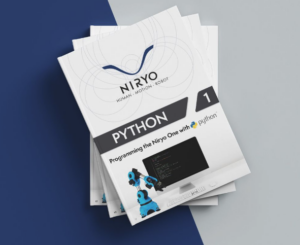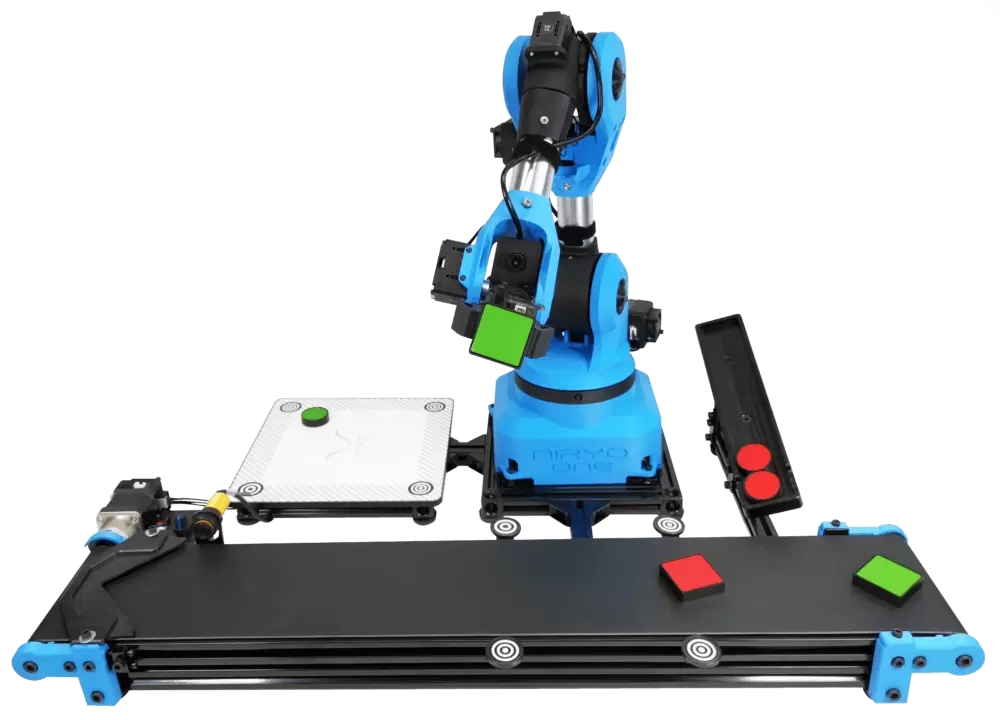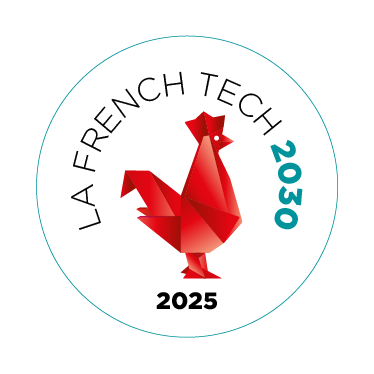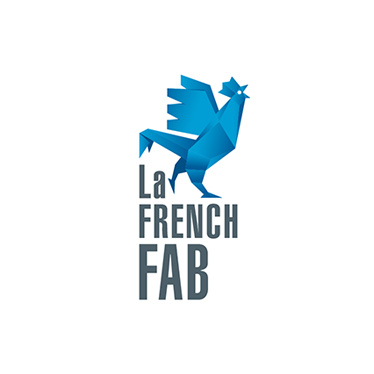Robots first appeared in the industrial field almost 60 years ago. Since then, industrial robotics has evolved considerably and offers today unequalled precision, speed and repeatability.
However, it is still very complex to set up and its action is minutely measured and therefore not very flexible. In recent years, collaborative robotics has emerged, allowing the association of humans and robots in the performance of industrial tasks. The addition of vision and artificial intelligence to these robots now makes them much more flexible and much more adapted to respond to rapidly changing consumer demands.
At Niryo, we know that robotics, especially cobotics, is the future. We know that this is also developing through research and education. This is why we wanted to provide them with concrete means so that they can learn and develop tomorrow’s industry in the best possible way. The Niryo One, our six-axis, open-source robot, provides researchers and students with robots capable of faithfully reproducing the most advanced industrial uses, at a much lower cost than an industrial robot, while optimizing the allocated space.
In order to guide you in discovering our solutions and the 4.0 industry, we provide you with the Niryo One Studio, allowing you to program our robots without requiring any special knowledge in computer programming. We also offer you a multitude of various resources: tutorials, curriculum, demos, documentation…
An ecosystem designed for education and research
The Niryo One, a 6-axis collaborative robot.
The Niryo One is a 6-axis cobot that is similar to the collaborative robots that can be seen in industry. This collaborative robot is based on a Raspberry Pi 3 and on ROS (Robot Operating System, which is an open source meta operating system), compatible with Arduino. These features give access to the work of an entire community and thus benefit from a significant contribution of resources to carry out a multitude of concrete experiments.
How to control the Niryo One?
- Blockly: With its visual programming interface based on Blockly, Niryo aims to make robotics accessible to beginners. Indeed, no specific programming knowledge is required to control the robot. As a result, the robot can be easy to use, intuitive and accessible.
- Python: If you are already familiar with the world of programming or teaching/studying at a college, the Python language is not unfamiliar to you. This powerful and versatile language allows you to create scripts from the simplest to the most complex to control the Niryo One.
- ROS: The Niryo One is based on ROS (Robot Operating System), which allows you to use standardized functions to control the robot.
- Arduino: The Niryo One allows the creation of advanced and accessible automation systems, thanks in particular to its compatibility with Arduino.
- Matlab: With its Matlab interface, control the robot and its trajectories.
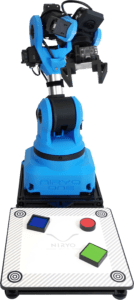
Set Vision
The Set Vision adds a big contribution to Industry 4.0. The prospects for prototyping are increasing and bring you closer and closer to the factory of the future.
This vision system, designed to be compatible with Niryo One’s ecosystem, is consisting of an embedded camera, a modular workspace and many other accessories. In addition to the Set Vision, a complete documentation is available on our website that will guide you through its installation and use through explanations, examples of use of the vision and related functions present on Niryo Studio via the Blockly interface. For advanced users, the Set Vision allows you to create your own image processing pipeline to test and perform advanced processes.
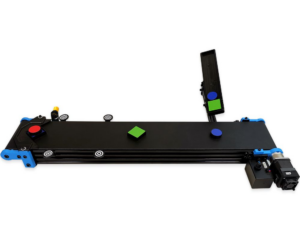
Convoyeur
In addition to the Set Vision, we offer a conveyor belt. Complementary to the Set Vision, the Conveyor is a necessary element for the prototyping of an industrial production line.
Controllable from Niryo One, Niryo One Studio, or autonomously, the Conveyor allows to create complex industry 4.0 oriented projects in an accessible way. We propose two versions: the standard version of the Conveyor includes an infrared sensor to detect the presence of an object, the educational version adds 6 manipulable objects, a limit stop and a ramp, which will allow to realize projects more and more faithful to the industrial production processes.
Prototyping industrial uses
This ecosystem which is designed for education and research allows both the discovery of industrial robotics and the prototyping of advanced uses that can be found in factories oriented towards Industry 4.0. Indeed, if industrial processes known as pick & pack allow industrial companies to optimize their production systems, Niryo One’s ecosystem allows to prototype them easily and quickly, while remaining anchored in the practical reality of the field.
To make it easier for you to get to grips with our products, we provide you with ready-to-use industrial demonstrators that represent concrete industrial use cases and can be used as a basis for many robotics projects oriented towards Industry 4.0.
Niryo’s ecosystem
The democratization of robotics is not only about offering accessible products. Democratizing robotics means accompanying the transition to Industry 4.0 by making it understandable. Why should Industry 4.0, the industry of the future, be abstract?
Therefore, we propose a complete documentation:
- User manuals for the products (Niryo One, Set Vision and Conveyor)
- User manuals for APIs (TCP Python, MODBUS…)
- Practical projects, which allow you to practice robotics using our products and technologies. Each document provides crucial information on its subject and proposes didactic applications with the correct answers. To date, we propose a Starter Guide, allowing you to familiarize yourself with the Niryo One, two practical projects oriented towards computer programming, one using our Niryo One Studio, the other one using Python, one practical project allowing you to discover our Set Vision and another one to allow you to use the Niryo One using ROS. In order to cover as many topics related to robotics as possible, we will propose more practical projects on MATLAB, simulation, image processing…
- Tutorials on how to use our products.
